Upholstery Fabrics
Choosing the best upholstery fabrics for your home can be challenging. You need to make sure that they suit the piece of furniture, match the décor of the room and are a practical choice for the environment of the home.
Sometimes, a practical choice may not match the look you're going for, but it could prolong the life of your furniture and make upholstery cleaning and maintenance a lot easier. If you don't know how to clean upholstery properly and safely, then choosing the best upholstery fabrics will be crucial for their longevity.
Choosing The Best Fabrics for Upholstery
Getting the best fabrics for upholstery is very important for durability, cleaning, and maintenance. Significantly, the fabric should withstand all the wear and tear of the current environment.
For instance, fabrics for formal spaces can be less durable, and the ones for domestic use like home sofas need to be rigid and more resistant to stains and everyday use.
If you have kids or pets at home, then choosing silk upholstery might not be a wise decision for couch fabric. Rooms that have higher engagement need durable fabrics and should not be fitted with upholstered items that don’t handle regular wear and tear.
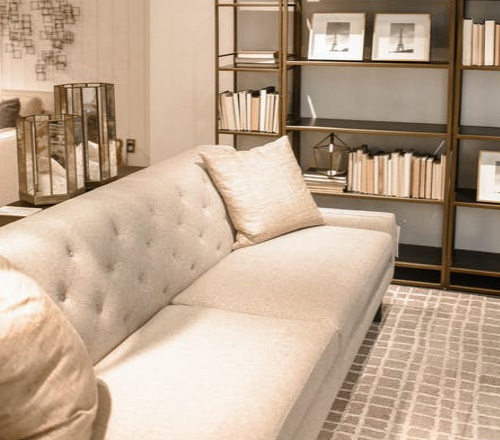
If your upholstery doesn’t get exposed to kids, animals, and other forms of heavy use, then there are less durable but often more decorative choices available to you.
Also, keep in mind that you should get fabric protection in order to increase the lifespan of your upholstery and to aid in stain prevention.
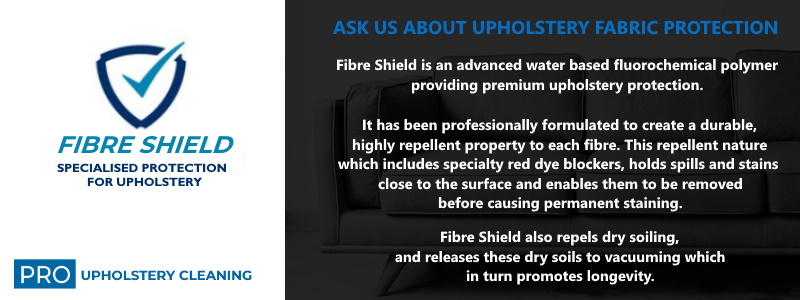
Types of Upholstery Fabrics
There are two main upholstery fabric types that you will encounter: Natural and Synthetic. Aside from this, your upholstery material can be a blend of both fabric types, a blend of multiple natural fabrics, or a blend of multiple synthetic fabrics.
Natural Upholstery Fabrics
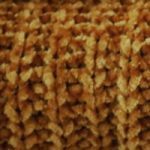
Wool
Generally resistant to fading, pilling, shrinkage, and soil. Sometimes blended with a synthetic material for extra durability and reduces felting.
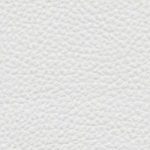
Leather
Very durable and easy to care for. Regular vacuuming and applying leather conditioner every few months can help maintain the look and feel of the material. This is not to be confused with faux leather.
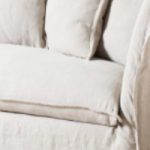
Has a tendency to get soiled and is not a good choice for areas that get moderate to high levels usage. Also can get cellulosic browning from excessive moisture.
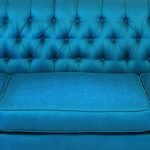
Silk
Very delicate and only suitable for extremely low levels of usage. Suits a formal setting with minimal use and does not like exposure to heat.
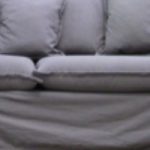
Cotton
Very common and often blended with a synthetic fibre, cotton is a popular choice and can be resistant to wearing and fading problems. It is also more susceptible to absorbing dyes and these can be hard to remove.
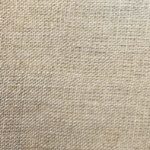
Hemp
An ancient fibre that has been around for a very long time. Originally used for making textiles and ropes, it has been adapted into the upholstery world and is often blended with other fabrics.
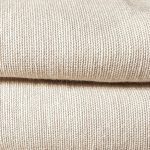
Canvas
Another timely fibre that has origins spanning back to maritime ages when it was used to create sails on marine vessels.
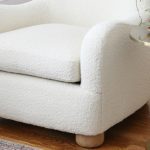
Boucle
French for 'Curl' or 'Loop', Boucle is known for its nubby, almost fleece-like appearance and is today commonly used to upholster chairs and ottomans.
Synthetic Upholstery Fabrics
Acetate
This is mostly artificial silk and can highly withstand pilling, shrinking, and even mildew. However, it would be best to protect it from the sun as it tends to fade quickly.

Acrylic
This is mostly synthetic wool and can highly resist wearing, wrinkling, fading, and soiling. Be sure to choose high-quality acrylic as this material is susceptible to piling.

Microfiber
Microfiber is made from polyester and happens to be highly durable. It can show stains but can handle heavy-duty cleaning and maintenance.
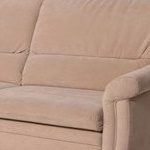
Vinyl
Durable and can withstand a lot of wear and tear. Less expensive than leather but has a similar look while also being easy to clean and can last a long time.
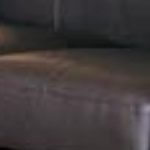
Nylon
Nylon is highly resilient and usually combined with other fabrics, making it one of the most durable fabrics of high resistance.
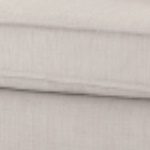
Olefin
Olefin can help you to with heavy wear. You can use this material for both indoor and outdoor purposes.
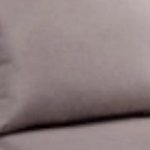
Polyester
Polyester is usually blended with other materials to provide high resistance and is highly feasible as it helps you reduce piling.
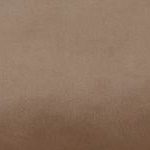
Polypropylene
Polypropylene is durable yet also soft. It's very versatile and has some stain resistant properties that makes it a great choice for the couch in your living room.
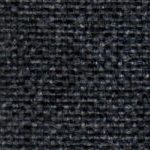
Rayon
This stuff is terrible and goes by many names including viscose, art silk, bamboo silk, banana silk, faux silk, lyocell, and modal. It is incredibly weak and does not react well with any type of staining or soiling. This is often passed off as silk due to its appearance but it’s not silk and should not be used for anything except a decorative piece that gets zero exposure to anything.
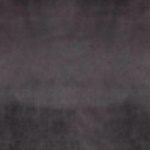
Best Fabric Materials for Different Situations
Now that you have seen the different types of upholstery fabrics, it’s important to know when and where they can be practically used.
This is very important because some types of fabrics can only be cleaned in specific ways such as steam cleaning or dry cleaning.
You don't want to get a type of fabric that will get a lot of exposure and soil quickly but it can barely be cleaned without
causing damage.
Low Exposure
Linen, Acetate, Silk
Medium Exposure
Microfiber, Vinyl, Cotton, Wool, Acrylic
High Exposure
Polyester, Nylon, Olefin, Leather
Keep in mind where the upholstered piece of furniture will be and what it will get exposed to. The fabrics for dining chairs will have different levels of practicality in comparison to the fabrics for sofas in an office or a single chair in a bedroom. Commercial upholstery will also have different requirements as it receives much more exposure and higher levels of soilage.
Experience The Best Upholstery Fabric Cleaners
Fabrics have been around for a very long time and have long been a staple of society. In some instances, the manufacturing and processing have greatly changed and brought us incredible blends and beautiful textures. In other instances, it's barely changed at all and some fabrics are made the same way they were thousands of years ago.
Regardless, the upholstery fabrics you choose will be affected by its surrounding environment so be sure to make a choice based on several elements such as kids, animals, daily usage, colour, material, sunlight, food and drink, and humidity.
This is especially true when dealing with marine and automotive upholstery which will be used for different environments and levels of exposure.
We recommend you get your upholstery fabric professionally cleaned at least once per year and any time you have a stain that you can't safely remove yourself.
